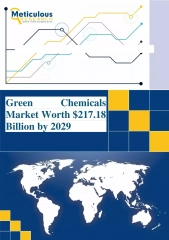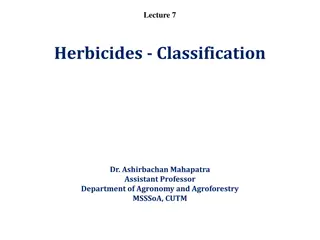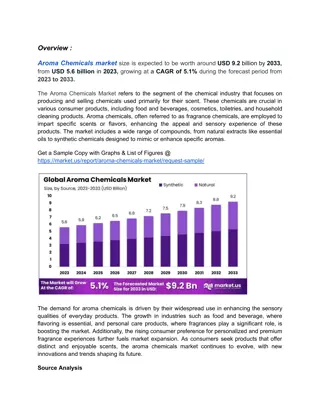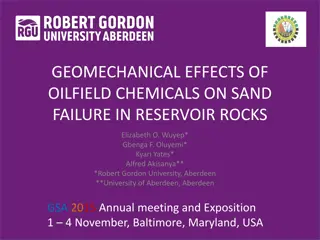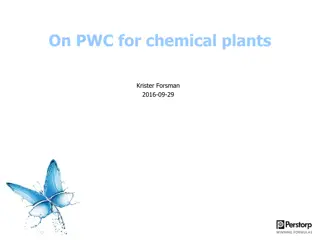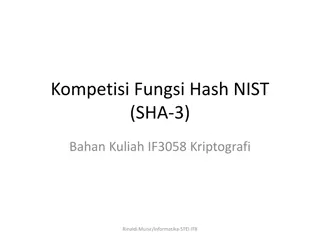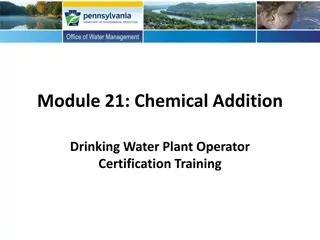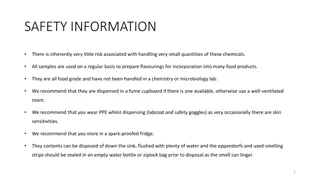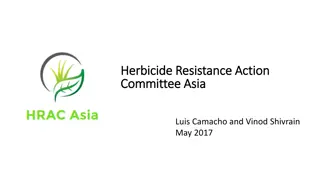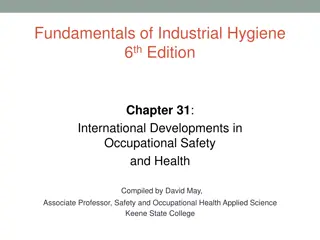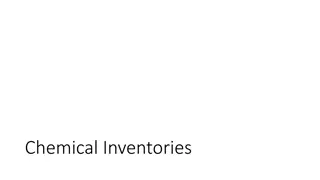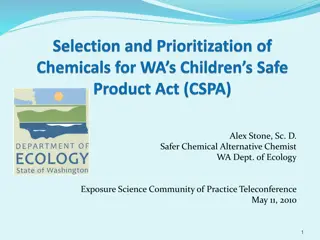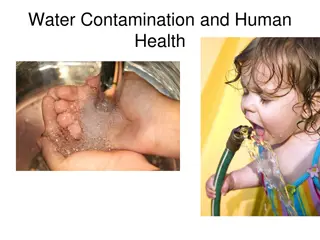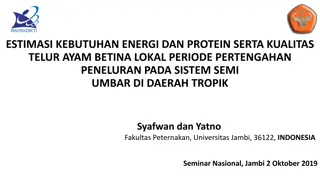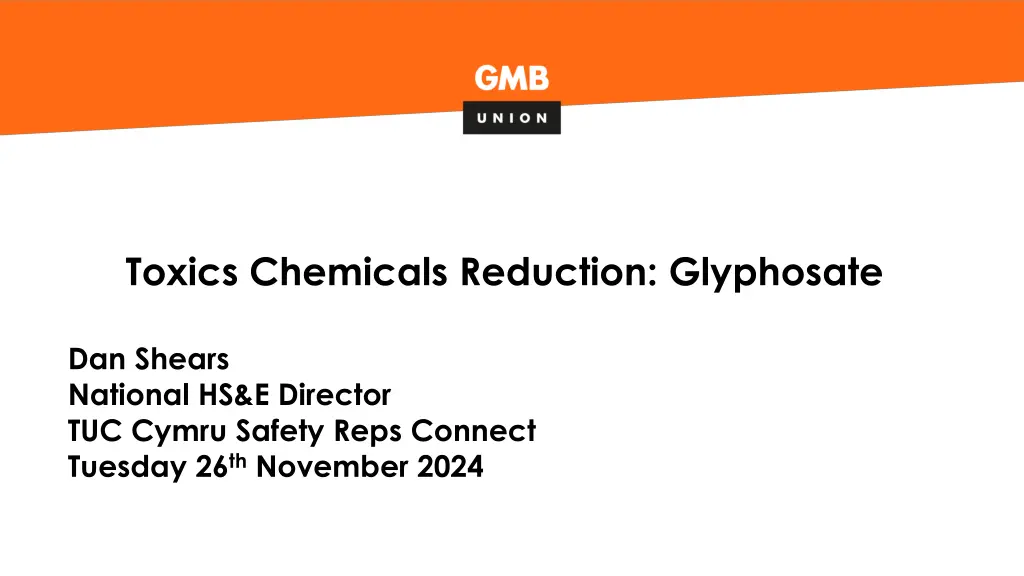
Glyphosate Hazards, Health Risks, and Alternatives Explained
Learn about glyphosate, a widely used herbicide linked to health hazards like Non-Hodgkin's lymphoma and other risks. Discover why GMB is involved and the actions taken, along with safer alternatives for weed control in outdoor settings.
Download Presentation

Please find below an Image/Link to download the presentation.
The content on the website is provided AS IS for your information and personal use only. It may not be sold, licensed, or shared on other websites without obtaining consent from the author. If you encounter any issues during the download, it is possible that the publisher has removed the file from their server.
You are allowed to download the files provided on this website for personal or commercial use, subject to the condition that they are used lawfully. All files are the property of their respective owners.
The content on the website is provided AS IS for your information and personal use only. It may not be sold, licensed, or shared on other websites without obtaining consent from the author.
E N D
Presentation Transcript
Toxics Chemicals Reduction: Glyphosate Dan Shears National HS&E Director TUC Cymru Safety Reps Connect Tuesday 26th November 2024
What is glyphosate? Glyphosate is the key ingredient in a powerful herbicide (weedkiller) most commonly known as Roundup, but also known as Accord, Rodeo, Touchdown and Rosate. Developed by the manufacturer Monsanto in the early 1970s, it has been on the market since 1973 and is the most commonly used weedkiller in the world. Glyphosate can be found in many industrial and domestic weedkilling products. In March 2015, The World Health Organisation s International Agency on Research into Carcinogens (IARC) announced that glyphosate probably caused a cancer called Non-Hodgkin s lymphoma (NHL). This was based on a study of agricultural workers in Sweden, Canada and the USA who were exposed to the chemical, although it was backed up by tests on animals.
What are the health hazards? Outside of NHL, the major health risk identified was until recently concern over stomach bacteria, damaging the gut microbiome. There are potential links to coeliac disease and IBS If swallowed it may cause corrosion of the throat and can lead to kidney or liver failure. Recent research has identified glyphosate as a possible cause of thyroid disease It has also been identified as a potential endocrine disruptor. It can also cause discomfort if it is breathed in. Exposure to the eyes can result in conjunctivitis.
Why are GMB involved? GMB members work in many outdoor industries, and we represent Park workers, groundskeepers, and arboricultural workers A motion to our 2016 Congress commanded us to campaign on eliminating exposures to work-related carcinogens The IARC report gave us the evidence needed to challenge glyphosate use
What did GMB do? We developed new guidance for members on glyphosate We used our network of MPs, and crucially local councillors, to raise awareness of the issue at Local Authority level This campaigning saw both challenges and grievances in the workplace, and motions tabled for debate by Councils.
What are the alternatives? Hot foam systems / hot water systems Hand weeding is an option particularly for smaller areas such as playgrounds and on paths running through parks. Acetic acid dilutions have been used very effectively to control weeds on hard surfaces in a variety of situations. Manual approaches are available in the form of differing types of mulching. Flame treatment has been used successfully to eliminate weeds. Steel brushing can be used for large scale areas such as pavements and roads. High pressure hot water treatments can be particularly effective Adapted from an original list from the Pesticides Action Network UK
What was the impact? 1. Glastonbury, Somerset 2. Erewash, Derbyshire 3. Wadebridge, North Cornwall 4. Hammersmith and Fulham, London 5. Lewes District, East Sussex 6. Cowes, Isle of Wight 7. Frensham, Surrey 8. Peterlee, Durham 9. Shaftesbury, Dorest 10.Trafford, Manchester 11.Cambridge, Cambridgeshire 12.Midlothian, Scotland 13.Highland, Scotland 14.Lyme Regis, Dorset 15.Greater London Authority 16.Frome, Somerset 17.Chichester, West Sussex 18.Colchester, Essex 19.Vale of Glamorgan, Wales 20.Derry, Londonderry 21.Folkestone & Hythe, Kent 22.Shetland, Scotland 23.Petersfield, Hampshire 24.Lambeth, London 25.Faversham, Kent 26.Hexham, Northumberland 27.Hadleigh, Suffolk 28.Balerno, Edinburgh 29.Wirral, Liverpool 30.Waverley, Surrey 31.Warminster, Wiltshire 32.Manningtree, Tendring, Essex 33.Bilbrook, South Staffordshire 34.Reading, Berkshire 35.Bath and North East Somerset 36.Renfrewshire, Scotland 37.Guildford, Surrey 38.Chelmsford, Essex 39.East Devon, Devon 40.Marlow, Buckinghamshire 41.Chipping Norton, Oxfordshire 42.Worthing, West Sussex 43.Newcastle, Tyne and Wear 44.Portsmouth, Hampshire 45.Westminster, London 46.West Suffolk, Suffolk 47.Berwick-upon-Tweed, Northumberland 48.Devon County 49.Flintshire, Wales 50.Newton Abbot, Devon
For more information: GMB Guide: https://www.gmb.org.uk/assets/media/downloads/1894/hs- glyphosate.pdf TUC Report: https://www.tuc.org.uk/research-analysis/reports/glyphosate Hazards Magazine on Chemical Regulation and Glyphosate: https://www.hazards.org/chemicals/sheepish.htm Pesticide Action Network UK: https://www.pan-uk.org/ US Right To Know: https://usrtk.org/pesticides/glyphosate-health-concerns/ Detox Project: https://detoxproject.org/


